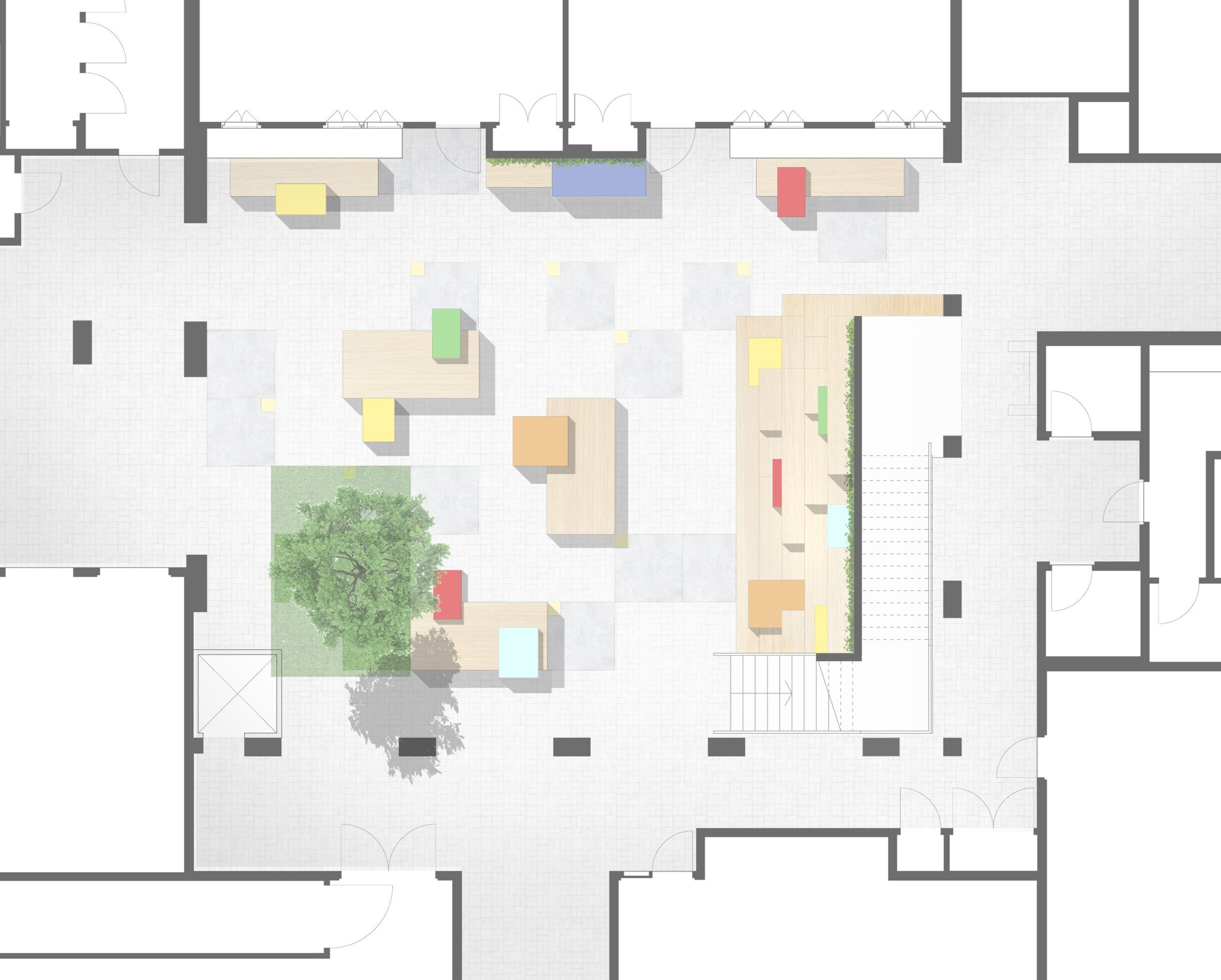Kids learn and grow on multiple levels in the classroom but outside of it as well. They read and write but they also learn through motion and through the senses. They observe and interact with their environment on so many levels. They interact with one another and they use their imagination and creativity… Play is such an important aspect of learning and development that we wanted to dedicate some thought to how we allow for more play to happen both in an academic setting and beyond.
learning and dreaming
To encourage play at its best we designed this Mondrian-esque court for a private school situated in a very compact urban campus in Los Angeles. In a very small footprint we incorporated a variety of spaces for both work and play! We used basic wooden and colored cubical components, divided and stacked into few zones, leaving enough open space for active and creative play. The cubes are set in multiple levels, creating platforms for social interaction, focused instruction, demonstrations, team huddles and reflective moments, like daydreaming!






